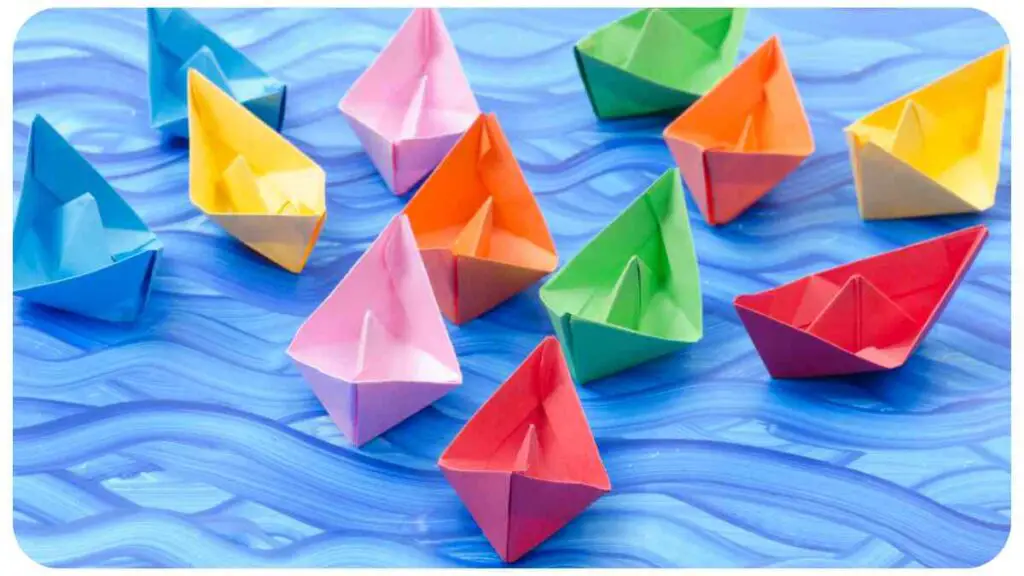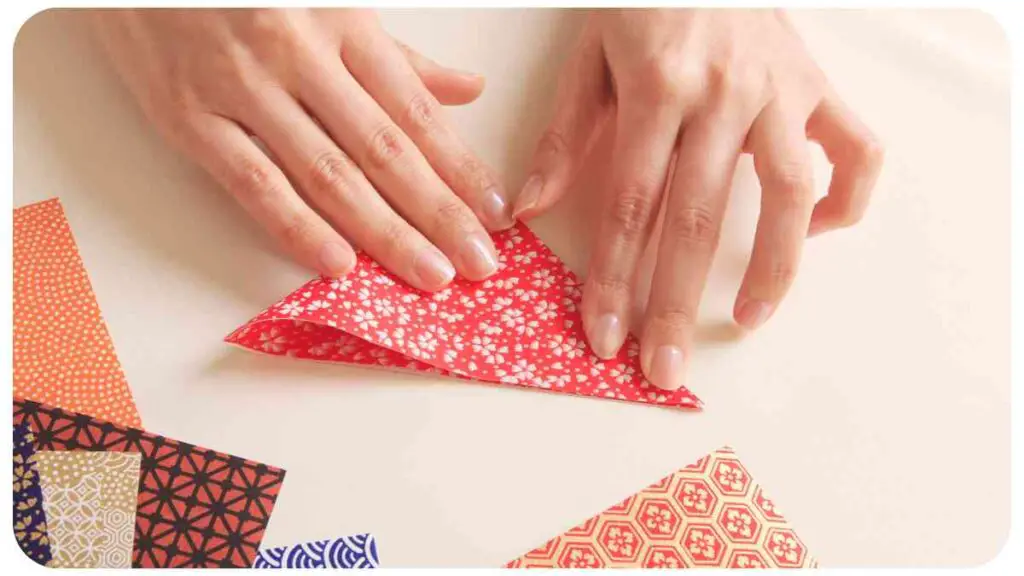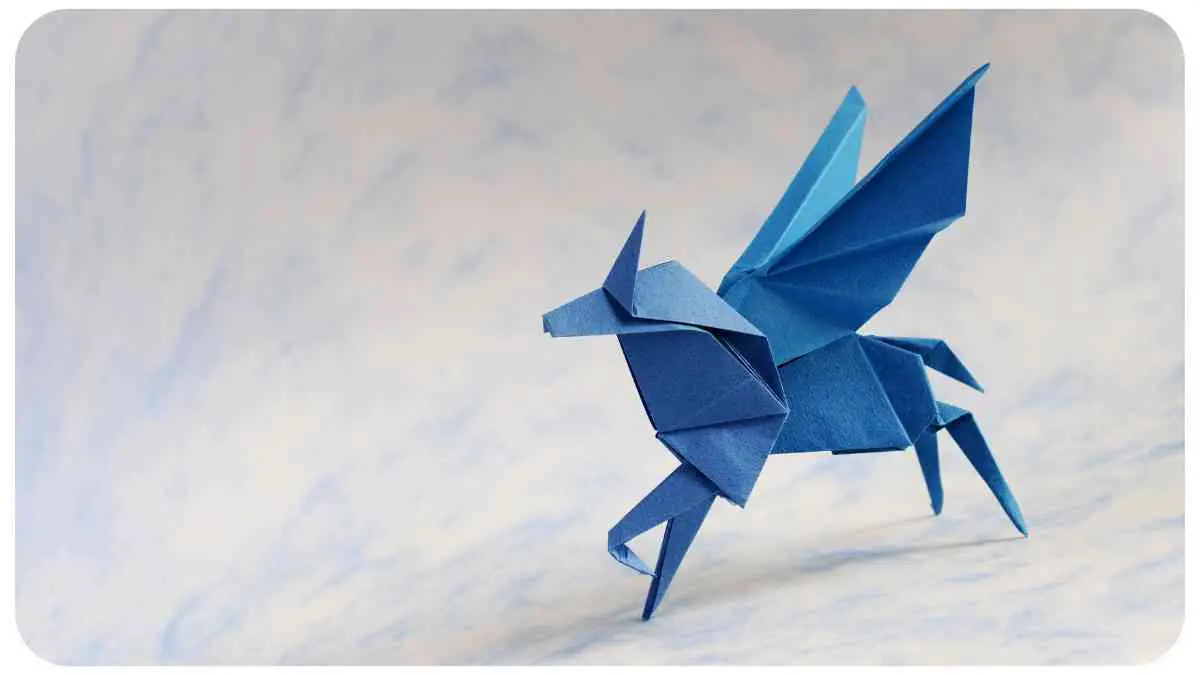Welcome to the world of origami, where the art of paper folding takes center stage. As an origami enthusiast, you know the importance of choosing the right type of paper for your projects. One common issue many origami enthusiasts encounter is using paper that is too thin.
In this article, we will explore the different options available to address this challenge. Whether you are a beginner or an experienced folder, these insights will help you elevate your origami game.
| Takeaway |
|---|
| The thickness and quality of origami paper play a significant role in the folding experience and final outcome of your models. |
| When selecting origami paper, consider factors such as smoothness, colorfastness, tensile strength, and print quality. |
| Investing in high-quality origami paper enhances the folding experience and allows you to create visually appealing models. |
| Different origami paper thicknesses cater to different levels of difficulty and recommended models. |
| Experimenting with different paper thicknesses and textures can help you discover your preferred style and achieve unique effects. |
| Strategies for dealing with thin origami paper include using double-ply, strengthening with adhesive, and mastering pre-folding techniques. |
| Thin origami paper presents challenges such as tear sensitivity, fragile creases, and structural instability, but with practice and proper techniques, these challenges can be overcome. |
| Further reading resources provide comprehensive guides and insights into choosing and finding the right origami paper for your projects. |
2. Understanding Origami Paper Thickness
Origami paper comes in various thicknesses, which can greatly impact the folding process and the final result of your creations. Thin paper can be delicate and prone to tearing, making it challenging to achieve crisp folds and intricate designs. It’s crucial to understand the different thickness options available and their implications for your origami projects.
Are you new to origami? Learn origami techniques step by step with our Origami for Beginners: A Step-by-Step Guide and discover the joy of paper folding.
3. The Impact of Thin Origami Paper
Using thin origami paper has its advantages, such as creating delicate and intricate models. However, it also poses certain challenges. Thin paper is more prone to tearing, and the final model may lack sturdiness.
When folding complex designs, thin paper may not hold its shape as well as thicker options. It’s essential to find the right balance between delicacy and durability to achieve satisfying results.
4. Exploring Different Thickness Options
Origami paper thickness is typically categorized into three main types: lightweight, medium-weight, and heavyweight. Each option offers unique possibilities for your origami projects. Let’s explore each category and its characteristics in more detail.
5. Lightweight Origami Paper

Lightweight origami paper is known for its delicate nature and ease of folding. It is often favored for creating models with intricate details. However, its thinness poses challenges when it comes to structural integrity. Here is a comparison table to illustrate the pros and cons of lightweight origami paper:
| Lightweight Origami Paper | |
| Pros | – Easy to fold |
| – Ideal for intricate models | |
| Cons | – Tears easily |
| – Lacks sturdiness |
6. Medium-weight Origami Paper
Medium-weight origami paper strikes a balance between ease of folding and durability. It offers versatility and can handle both complex and simple designs. This table highlights the characteristics of medium-weight origami paper:
| Medium-weight Origami Paper | |
| Pros | – Holds shapes well |
| – Suitable for most models | |
| Cons | – Moderate folding difficulty |
| – Limited intricacy |
7. Heavyweight Origami Paper
Heavyweight origami paper is sturdy and provides excellent structural support for complex models. This paper type requires more effort to fold but offers additional stability. Here are the attributes of heavyweight origami paper:
| Heavyweight Origami Paper | |
| Pros | – Strong and durable |
| – Ideal for complex models | |
| Cons | – Challenging to fold |
| – Less suitable for delicate folds |
8. Specialty Types of Origami Paper
Apart from the three main thickness options, there are specialty types of origami paper available. These papers feature unique characteristics and are designed to enhance specific aspects of your origami projects. Take a look at the comparison table below for more information:
| Washi Origami Paper | Metallic Origami Paper | |
| Description | Traditional Japanese paper | Shimmering metallic appearance |
| Pros | – Adds a cultural touch to models | – Creates eye-catching effects |
| Cons | – Requires delicate handling | – Limited variety of colors |
| Recommended for | Origami enthusiasts | Decorative and festive projects |
9. The Importance of Paper Quality
When selecting origami paper, it’s not just the thickness that matters, but also the quality. High-quality origami paper can make a significant difference in your folding experience and the final outcome of your models. Here are some key attributes to consider when evaluating paper quality:
- Smoothness: A smooth texture allows for easy folding and ensures crisp, clean lines.
- Colorfastness: Ensure that the paper’s color does not bleed or fade over time, preserving the aesthetic appeal of your models.
- Tensile Strength: Opt for paper that has sufficient strength to withstand folding, stretching, and shaping without tearing or deforming.
- Print Quality: If you prefer patterned or printed origami paper, make sure the printing is of high quality, with sharp and vibrant designs.
Investing in good-quality origami paper will enhance your folding experience and allow you to create visually appealing models that you can be proud of.
Building a strong foundation in origami is crucial for beginners. Explore our Origami for Beginners guide to master the art gracefully.
10. Enhancing Your Origami Folding Experience
To help you navigate the world of origami paper thickness, here are some tables that summarize and compare different options and brands:
Table: Comparison of Different Origami Paper Thicknesses
| Lightweight | Medium-weight | Heavyweight | |
| Ease of Folding | Easy | Moderate | Challenging |
| Structural Integrity | Limited | Moderate | High |
| Intricacy | High | Moderate | Limited |
| Recommended Models | Delicate | Most | Complex |
Table: Recommended Origami Papers for Beginners
| Lightweight | Medium-weight | Heavyweight | |
| Brand | Showagrimm Washi Origami Paper | Aitoh DSF-2 Double-Sided Origami Paper | Origami Supreme |
| Pros | Easy to fold, affordable | Versatile, good quality | Sturdy, holds shape well |
| Cons | Tears easily | Slightly more difficult to fold | Challenging for beginners |
| Suitable for | Simple models, practicing folds | Versatile projects, intermediate | Complex designs, experienced folders |
Table: Popular Brands for Lightweight Origami Paper
| Brand | Description |
| Origami Delights | Offers a wide range of vibrant and patterned papers |
| Creative Folds | Known for their smooth and easy-to-fold papers |
| Fold-Fun | Affordable and suitable for beginners |
Table: Comparison of Specialty Origami Paper Types
| Washi Origami Paper | Metallic Origami Paper | |
| Thickness | Lightweight to medium-weight | Lightweight to medium-weight |
| Texture | Textured and slightly rough | Smooth and metallic finish |
| Color Variety | Extensive range of colors | Limited selection |
| Special Characteristics | Traditional Japanese appeal | Reflective and shiny appearance |
| Recommended Projects | Nature-themed models, traditional | Festive and decorative designs |
These tables will provide a quick reference guide to help you choose the right origami paper for your specific needs and projects.
11. Tips for Choosing the Right Origami Paper
When selecting origami paper, consider the following tips to ensure a successful folding experience:
- Assess the complexity of the model: Choose a paper thickness that suits the intricacy of the design. Delicate models require lightweight paper, while complex structures benefit from heavier options.
- Experiment with different textures: Textured papers can add depth and visual interest to your origami creations. Try different textures to achieve unique effects.
- Take inspiration from the project’s purpose: If you’re folding origami for decoration or display, explore specialty papers that align with your intended theme.
- Consider paper availability: Ensure the paper you choose is readily available, especially if you plan to work on larger projects that require multiple sheets.
- Prioritize paper quality: High-quality origami paper enhances the final result. Opt for smooth, colorfast, and durable paper whenever possible.
Remember, choosing the right origami paper is a personal preference that depends on your specific project requirements and personal style as a folder.
Add a personal touch to your cards with these valuable card making tips and tricks from experienced crafters.
12. Strategies for Dealing with Thin Origami Paper
Despite the challenges posed by thin origami paper, there are strategies you can employ to overcome them:
- Use double-ply: Layering thin paper allows you to create a thicker and more durable surface for folding. Simply glue two sheets together or find pre-made double-ply options.
- Strengthen with adhesive: Apply a thin layer of transparent glue or adhesive reinforcement tape to reinforce delicate areas prone to tearing.
- Master pre-folding techniques:
Despite the challenges posed by thin origami paper, there are strategies you can employ to overcome them:
- Use double-ply: Layering thin paper allows you to create a thicker and more durable surface for folding. Simply glue two sheets together or find pre-made double-ply options.
- Strengthen with adhesive: Apply a thin layer of transparent glue or adhesive reinforcement tape to reinforce delicate areas prone to tearing.
- Master pre-folding techniques: To minimize the risk of tearing, utilize pre-folding techniques where you partially fold the paper without creasing tightly. This allows you to plan and adjust your folds before committing to the final creases.
- Limit excessive manipulation: Constantly unfolding and re-folding thin paper can weaken its structure. Try to minimize excessive manipulation and be gentle when shaping your model.
- Practice with scrap paper: Before attempting a complex design, practice with scraps of thin paper to familiarize yourself with folding techniques and assess the paper’s limitations.
Remember, perseverance and practice are crucial when working with thin origami paper. As you gain experience, you will develop a better understanding of its unique characteristics and how to work around its limitations.
Capture and preserve your cherished memories with style by diving into the world of scrapbooking. Discover the art of preserving memories in style today!
13. Experimenting with Paper Thickness

Origami is an art form that encourages experimentation and creativity. While thin origami paper may present its challenges, don’t shy away from experimenting with different thicknesses to discover your preferred style.
Try folding the same model using lightweight, medium-weight, and heavyweight paper to observe the varying results. This hands-on approach will not only enhance your folding skills but also provide insight into the impact of paper thickness on structural integrity and aesthetic appeal.
14. Challenges in Folding Thin Origami Paper
Folding thin origami paper can be a test of patience and precision. Some challenges you may encounter include:
- Tear sensitivity: Thin paper is more prone to tearing, requiring you to handle it with care and avoid applying excessive pressure during folding.
- Fragile creases: Achieving crisp and sharp creases can be more challenging due to the paper’s delicate nature. Utilize tools like bone folders or the edge of a ruler to assist in creating defined and clean folds.
- Structural instability: Complex and intricate designs may lack stability when folded with thin paper. Consider reinforcing areas that require more strength using additional folds or shaping techniques.
By being aware of these challenges, you can approach your origami projects with a proactive mindset and devise strategies to overcome them.
Delve into the realm of paper crafts without breaking the bank. Check out our collection of inexpensive ideas for your next budget-friendly project.
Conclusion
In conclusion, choosing the right thickness of origami paper is essential to achieve desired results in your folding projects. By understanding the characteristics of lightweight, medium-weight, and heavyweight paper, you can make informed decisions and tailor your choice to the intricacy and stability requirements of your models.
Additionally, considering specialty papers and prioritizing quality will further enhance your folding experience. Remember, thin origami paper may present challenges, but with practice, creativity, and the right strategies, you can still create beautiful and intricate origami models.
So, embrace the art of origami with confidence and let your creativity unravel through the delicate folds of paper. Happy folding!
Embark on a creative journey and learn how to make a stunning beaded bracelet in 15 simple steps with our easy-to-follow tutorial.
Further Reading
Here are some additional resources to explore for more information on origami paper:
Buying Guide for Paper for Origami: This comprehensive guide provides insights into choosing the right origami paper, including considerations for thickness, texture, and quality.
Origami Paper: How to Choose the Right One: This article offers tips on selecting origami paper, discussing the importance of thickness, texture, and pattern variety.
Special Paper for Origami: Exploring the Possibilities: Dive into the world of specialty origami paper with this exploration of unique options like metallic, lace, and heat-coloring papers.
FAQs
Here are some frequently asked questions about origami paper:
What is the best thickness for origami paper?
The best thickness of origami paper depends on the complexity and desired outcome of your project. Lightweight paper is ideal for intricate designs, medium-weight for versatility, and heavyweight for complex models.
Where can I find high-quality origami paper?
High-quality origami paper can be found at specialty craft stores, origami specialty shops, or online retailers. It’s important to find paper that is smooth, colorfast, and durable.
Can I use regular printer paper for origami?
Regular printer paper can be used for simple origami projects, but it may lack the desired characteristics like texture and color variety. It’s recommended to use specific origami paper for an enhanced folding experience.
How can I prevent thin origami paper from tearing?
To prevent tearing, handle the paper gently, use pre-folding techniques to plan folds before committing to creases, and reinforce delicate areas with adhesive or layering.
Are there any eco-friendly options for origami paper?
Yes, there are eco-friendly origami papers available. Look for papers made from recycled materials or sustainably sourced paper. Washi paper, a traditional Japanese paper, is often considered eco-friendly.

Hellen James is the creator of Unified Crafts and has been crafting since she was a kid accompanied by her mom to the craft store, where she was free to choose whatever ignited her imagination.

